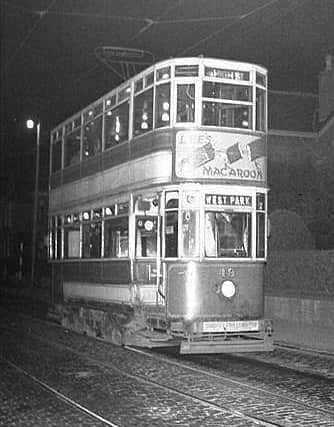History of Dundee’s Maryfield tram depot


At the turn of the 1900s, Dundee needed a mass transit system capable of handling its growing urban population, with its existing steam and horse-drawn setup proving to be outdated.
Built on Forfar Road in the Stobswell region of the city, the Maryfield Tram depot was opened by Dundee Corporation in 1901 with red and blue brick and curvilinear gables; features which the building still retains to this day.
Advertisement
Hide AdOriginally constructed to hold a dozen trams, it was later extended to house up to 70. The absence of the original Gatepiers is believed to be the result of action taken in the 1920s to widen the entrance to allow single deck tramcars passage to the depot.


Three rails fan out once inside the depot allowing trams to be serviced there, with two entrance tracks and pointing still visible outside the building. Using a Standard track gauge, remnants of the tramrail network can also be seen throughout the city including in the pedestrianised areas of Murraygate.
In its glory years, the Dundee Corporation had approximately 100 trams on the streets of 1930s Dundee in their distinctive green-and-cream finish. But by the immediate postwar era, Dundee’s transport network was in desperate need of modification. After the halting of the tram service on 27 October 1956 and their subsequent burning, the Corporation’s diesel bus fleet was stored in Maryfield from the 1960s onwards.
At first, Dundee used ex-London buses and even left one in Corporation colours in City Square for members of the public to take a closer look at. After decades of use by Dundee Corporation and Tayside Regional Council, the building fell into disrepair under the tenure of Scottish Water and a fire partially destroyed the rear section of the tram shed.
After more than a decade of emptiness, the Maryfield Tram Depot will be the location of the Dundee Museum of Transport by the end of 2017 if the listed building’s restoration is completed on time. The museum will also display Dundee’s oldest tram alongside Aberdeen’s oldest, with the Dundee example rediscovered in a Perthshire garden in 2014 after being used as a summer house for a number of years.
The announcement of Dundee Museum of Transport’s successful acquisition of the Maryfield depot follows years of wrangling and fundraising with Scottish Water and the public.